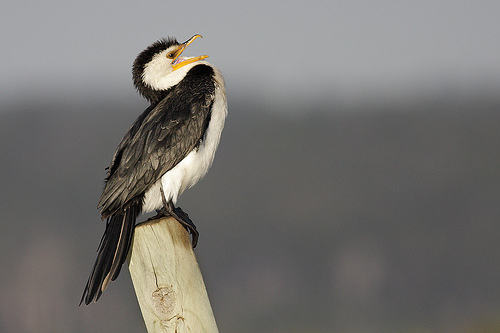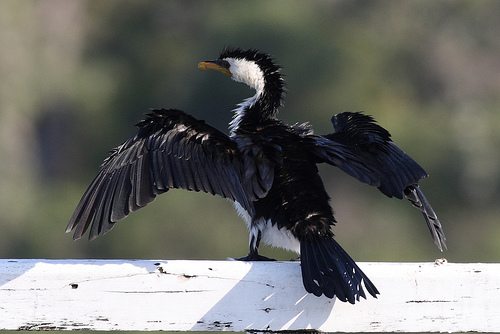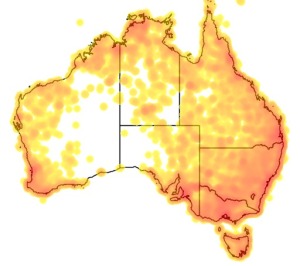Colours
Distinguishing features
It is a small short-billed cormorant usually black above and white below with a yellow bill and small crest.
The pied form is glossy black above with white face, underparts and thighs. The bill and bare skin around the face are yellow. In both forms the legs and feet are black. The pied form is rare in New Zealand where a mostly black white-throated form predominates.
Chicks have dark brown down, with pied morph having patches of paler down. Immature birds are a dull blackish brown, with pied morph birds having paler underparts. (Wikipedia)
Size
- From 56 cm to 58 cm (Length of specimen)
Wingspan
- Wingspan data is not yet available.
Synonyms
Similar taxa
Distribution
Distribution and habitat preferences
It is found around the coasts, islands, estuaries, and inland waters of Australia, New Guinea, New Zealand, Malaysia, and Indonesia, and around the islands of the south-western Pacific and the subantarctic. (Wikipedia)
Diet
It is a benthic feeder, i.e. it finds its prey on the sea floor. It is a solitary feeder, normally diving in relatively shallow water, often near the shore. Dive times are short, around 15 to 20 seconds, with recovery times on the surface of 5 to 10 seconds unless prey are being swallowed. It takes a variety of fish prey but an unusually high proportion (nearly 30% by weight on average, and up to 80% in some individuals) of crustaceans. In New Zealand waters it is most often seen preying on the local flounder and other small flatfish. Eels and insect larvae are also consumed. (Wikipedia)




